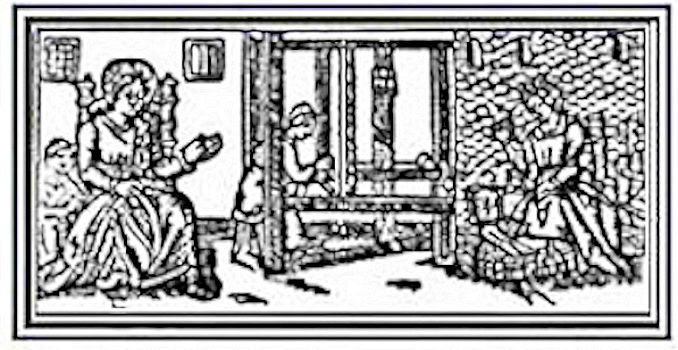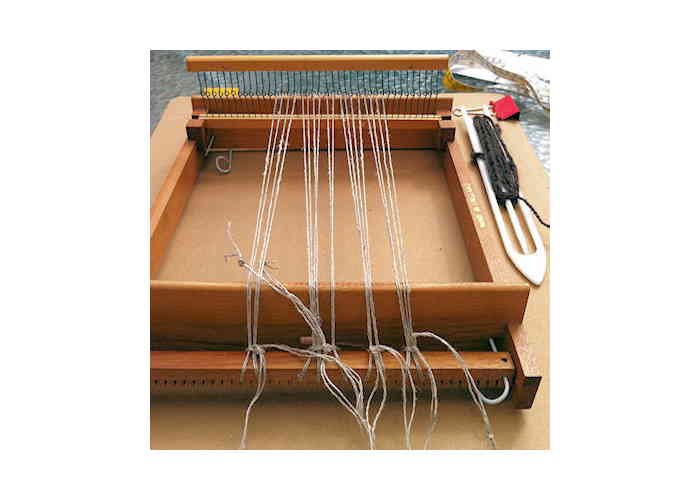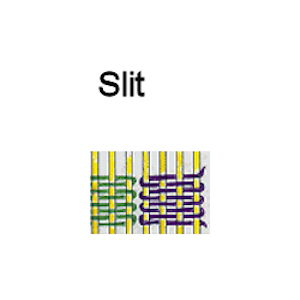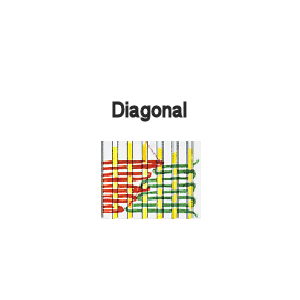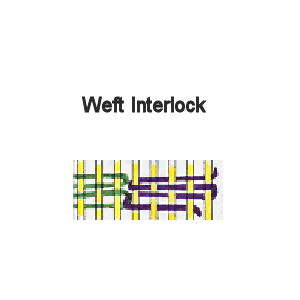I found this lovely little loom on Ebay. It came in its original box, complete with instructions and weaving sticks. It is a Spears No 3 Weaving Loom made in the 1950’s. Spears looms were designed to be a child’s toy loom, but they are quite sturdy and well made. With the rigid heddle that lifts and lowers alternate warp threads, the looms are designed for weaving plain fabrics.
However I thought that I could also use this loom for weaving small tapestries. Rather than threading the reed using both the holes and slots, I threaded the warp through the holes only as I will not be using the reed to lift and lower the warp or to beat the weft in place. Instead I will lift and lower the warp threads by hand, as in tapestry. I use a fork to beat down the weft into place.
To test this loom I put on a narrow warp (about 4 inches in width)
Yarn
Warp:
For this project I used 3 ply hemp yarn for the warp. 18 ends, 2 yards in length.
If you don’t have hemp, you can substitute with a linen or a strong cotton yarn.
Weft:
I am using single ply hand spun wool for the weft that has been dyed withnatural fungi and plant dyes.
I wind small amounts of yarn into butterflies.

The ‘warp beams’ have slots in them for tying the warp threads to. I found it quite fiddly and difficult to hold the warp in place in the grooves, so I used some cello tape to tape them down. Once the ends were secure I wound the warp onto the ‘back beam’ and put the holding pin (brake) into the small holes on the beam to hold it in place.
At the front end of the loom, I tied the warp ends over the warp beam, similarly to tying them on a floor loom.
In this sample, I am demonstrating a few common tapestry techniques.
Weave Header
I begin the project by weaving in a header using 2 ply wool. Weave a tabby pattern (over/under warp threads) for about 1/2 inch to create a firm edge for the tapestry.

Slit Technique
In the Slit technique, each colour is woven back and forth, separately. This is generally used in small sections as a slit is created in the rug.
Warp Interlock
Two colours can also meet by wrapping around the same warp thread. The Warp Interlock creates a jagged edge and is used in diagonal joins.
Diagonal
Diagonal (or other) shapes are woven using a combination of interlocking techniques. The steepness of the diagonal determines when to change to the next colour.
Weft Interlock
In the Weft Interlock, the two adjoining colours wrap around each other between two warp threads. It is used on long joins.
My Next Tapestry Project
Tapestry Weaving Books
Small Loom & Freeform Weaving: Five Ways to Weave
Tapestry Handbook
Tapestry Weaving
EBAY Spears Looms
Spears LOOMS US
 LONGTHREAD MEDIA VIDEO
LONGTHREAD MEDIA VIDEO
 LONGTHREAD MEDIA SUBSCRIPTIONS
HANDWOVEN MAGAZINE
PIECEWORK MAGAZINE
SPINOFF MAGAZINE
LEARN LONGTHREAD MEDIA
PAIVATAR HANDMADE
LONGTHREAD MEDIA SUBSCRIPTIONS
HANDWOVEN MAGAZINE
PIECEWORK MAGAZINE
SPINOFF MAGAZINE
LEARN LONGTHREAD MEDIA
PAIVATAR HANDMADE
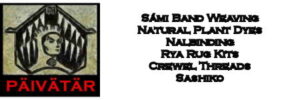 Paivatar on YouTube
Visit my YouTube channel for how-to craft videos.
Paivatar on YouTube
Visit my YouTube channel for how-to craft videos.
Or Please visit my Channel on Rumble for more how-to videos.
https://rumble.com/Paivatar
LIVE STREAMS - Paivatar Studio
KICK
TWITCH MAKERS&CRAFTING
YOUTUBE
Categories: Fun Projects, LOOMS, Small Looms, Tapestry Weaving
